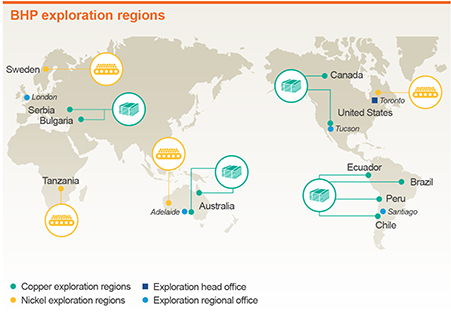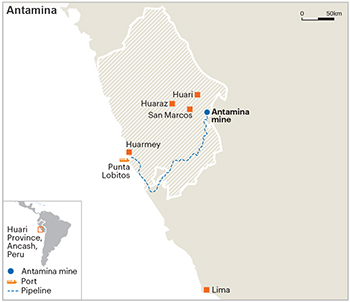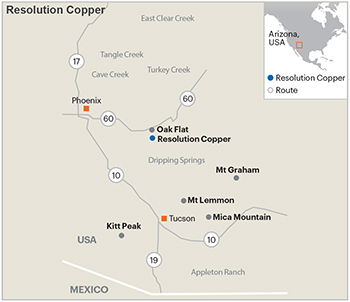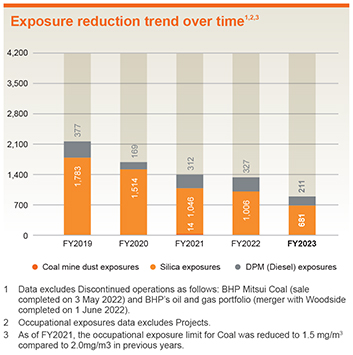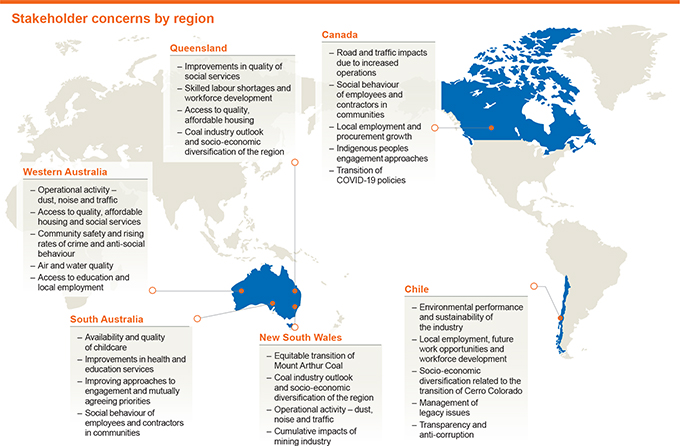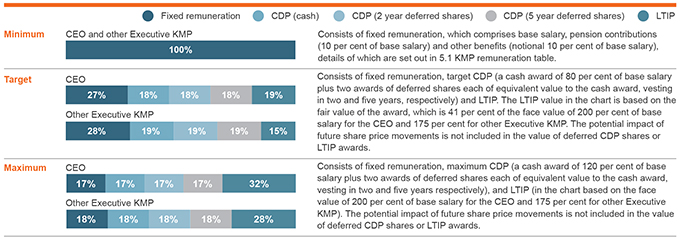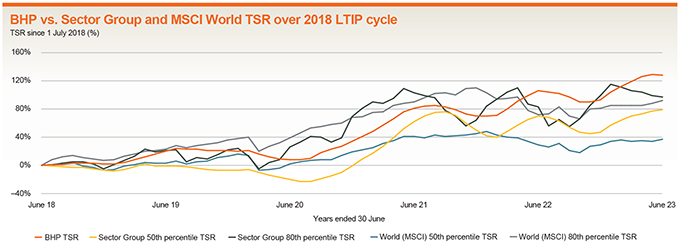Forward-looking statements may be identified by the use of terminology, including, but not limited to, ‘intend’, ‘aim’, ‘ambition’, ‘aspiration’, ‘goal’, ‘target’, ‘project’, ‘see’, ‘anticipate’, ‘estimate’, ‘plan’, ‘objective’, ‘believe’, ‘expect’, ‘commit’, ‘may’, ‘should’, ‘need’, ‘must’, ‘will’, ‘would’, ‘continue’, ‘forecast’, ‘guidance’, ‘trend’ or similar words. These statements discuss future expectations or performance, or provide other forward-looking information.
Examples of forward-looking statements contained in this Report include, without limitation, statements describing (i) our strategy, our values and how we define our success; (ii) our expectations regarding future demand for certain commodities, in particular copper, nickel, iron ore, metallurgical coal, potash and steel, and our intentions, commitments or expectations with respect to our supply of certain commodities, including copper, nickel, iron ore, potash, uranium and gold; (iii) our future exploration and partnership plans and perceived benefits and opportunities, including our focus to grow our copper, nickel and potash assets; (iv) the structure of our organisation and portfolio and perceived benefits and opportunities; (v) our business outlook, including our outlook for long-term economic growth and other macroeconomic and industry trends; (vi) our projected and expected production and performance levels and development projects; (vii) our expectations regarding our investments, including in potential growth options and technology and innovation, and perceived benefits and opportunities; (viii) our reserves and resources; (ix) our plans for our major projects and related budget and capital allocations; (x) our expectations, commitments and objectives with respect to sustainability, decarbonisation, natural resource management, climate change and portfolio resilience and timelines and plans to seek to achieve or implement such objectives, including our 2030 goals and ‘Pathway to 2030’ , our approach to equitable change and transitions, our Climate Transition Action Plan, Climate Change Adaptation Strategy and goals, targets and strategies to seek to reduce or support the reduction of greenhouse gas emissions, and related perceived costs, benefits and opportunities for BHP; (xi) the assumptions, beliefs and conclusions in our climate change related statements and strategies, including in our Climate Change Report 2020, for example, in respect of future temperatures, energy consumption and greenhouse gas emissions, and climate-related impacts; (xii) our commitment to social value; (xiii) our commitments to sustainability reporting, frameworks, standards and initiatives; (xiv) our commitments to improve or maintain safe tailings storage management; (xv) our commitments to achieve certain inclusion and diversity targets, aspirations and outcomes; (xvi) our commitments to achieve certain targets and outcomes with respect to Indigenous peoples and the communities where we operate; and (xvii) our commitments to achieve certain health and safety targets and outcomes.
Forward-looking statements are based on management’s expectations and reflect judgements, assumptions, estimates and other information available, as at the date made. BHP cautions against reliance on any forward-looking statements.
These statements do not represent guarantees or predictions of future financial or operational performance and involve known and unknown risks, uncertainties and other factors, many of which are beyond our control and which may cause actual results to differ materially from those expressed in the statements contained in this Report.
For example, our future revenues from our assets, projects or mines described in this Report will be based, in part, on the market price of the commodities produced, which may vary significantly from current levels. These variations, if materially adverse, may affect the timing or the feasibility of the development of a particular project, the expansion of certain facilities or mines, or the continuation of existing assets.
In addition, there are limitations with respect to scenario analysis, including any climate-related scenario analysis, and it is difficult to predict which, if any, of the scenarios might eventuate. Scenario analysis is not an indication of probable outcomes and relies on assumptions that may or may not prove to be correct or eventuate.
Other factors that may affect the actual construction or production commencement dates, revenues, costs or production output and anticipated lives of assets, mines or facilities include: (i) our ability to profitably produce and deliver the products extracted to applicable markets; (ii) the impact of economic and geopolitical factors, including foreign currency exchange rates on the market prices of the commodities we produce and competition in the markets in which we operate; (iii) activities of government authorities in the countries where we sell our products and in the countries where we are exploring or developing projects, facilities or mines, including increases in taxes and royalties or implementation of trade or export restrictions; (iv) changes in environmental and other regulations; (v) political or geopolitical uncertainty; (vi) labour unrest; and (vii) other factors identified in the risk factors set out in OFR 8.1.
Except as required by applicable regulations or by law, BHP does not undertake to publicly update or review any forward-looking statements, whether as a result of new information or future events.
Past performance cannot be relied on as a guide to future performance.
ii



